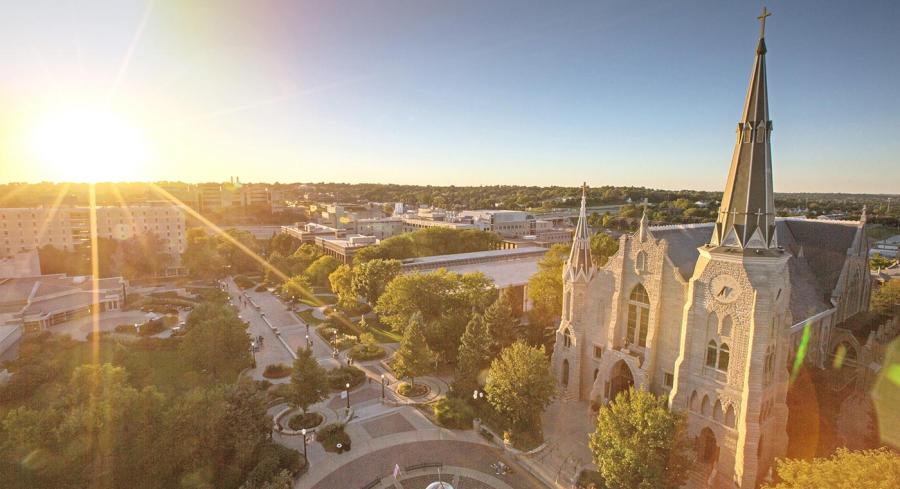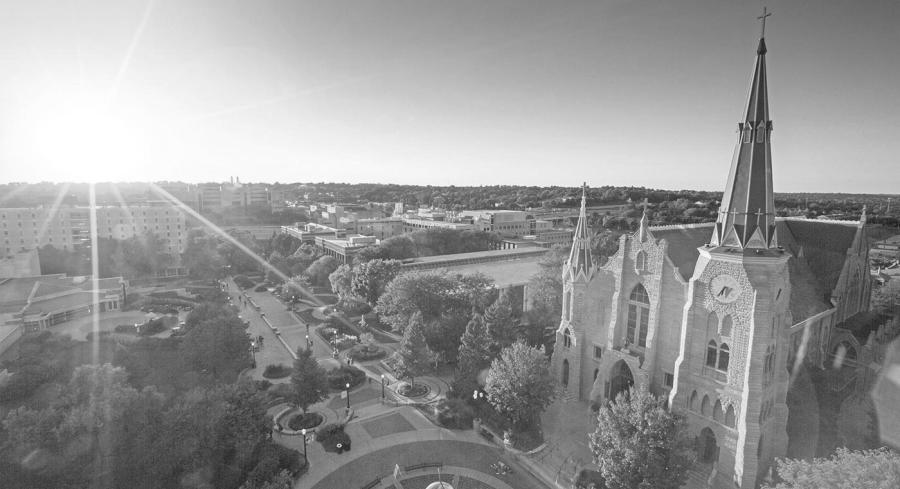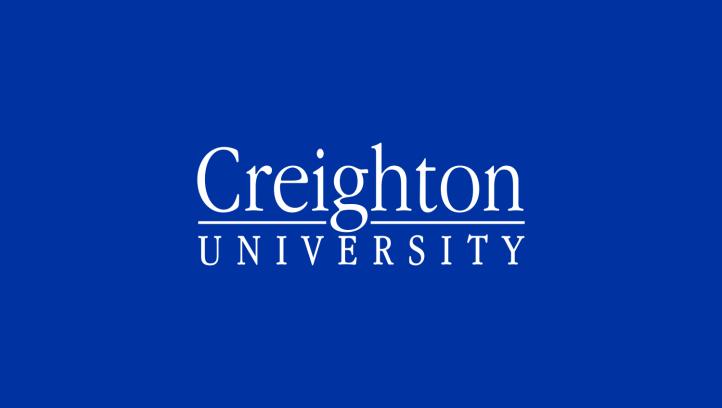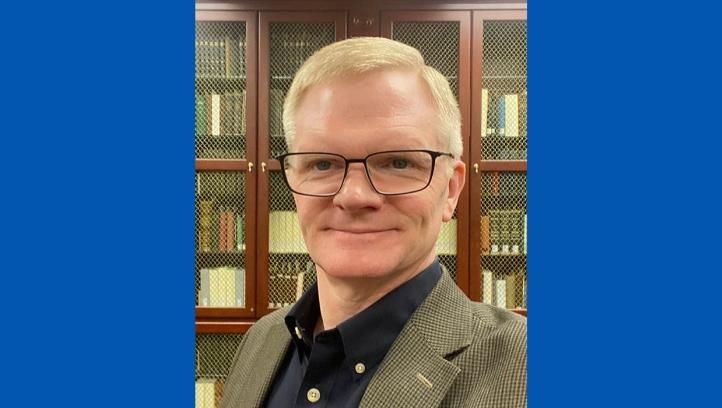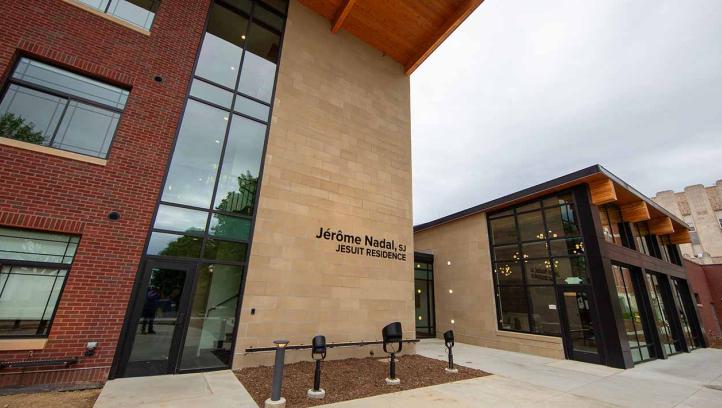
NY Times columnist Kristof to deliver commencement address
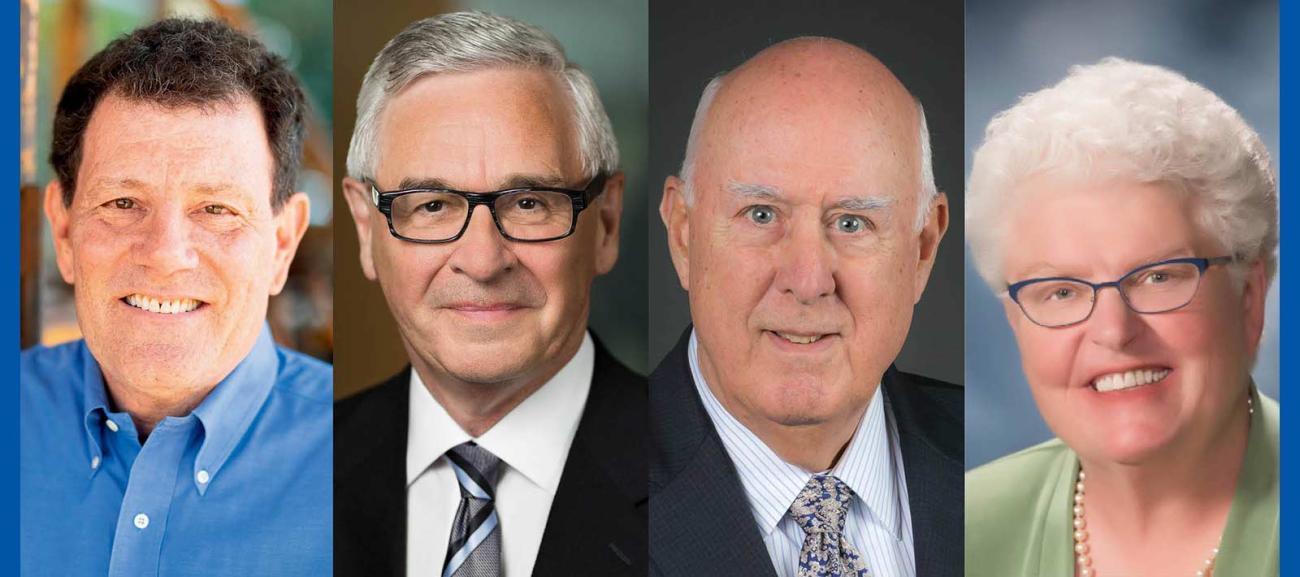
Nicholas Kristof, a Pulitzer Prize-winning journalist, columnist and humanitarian, has been announced as Creighton University’s undergraduate commencement speaker for the Class of 2024 by Creighton President the Rev. Daniel S. Hendrickson, SJ, PhD.
“A New York Times bestselling author with nearly 40 years of journalistic experience, Kristof has brought attention to injustice and has walked alongside those who live at the margins of society – a cause aligned closely with Creighton’s Jesuit, Catholic values and ideals,” Fr. Hendrickson said in a message to the Creighton University community.
Creighton’s undergraduate commencement ceremony will take place at the CHI Health Center on Saturday, May 11. As part of the ceremonies, Kristof will be awarded an honorary doctorate and will join three others who will also be receiving honors for their contributions to Creighton and the Omaha community: Mogens C. Bay, chairman of Valmont Industries, Inc.; Kenneth E. Stinson, chairman emeritus of Peter Kiewit Sons’, Inc.; and Sr. Delores Hannon, RSM, former president of Mercy High School.
“In journalism, Kristof has enhanced our awareness of global strife, understanding of international politics, and discussions on gender equality,” Fr. Hendrickson said. “His measured perspectives, studiousness, and ability to articulate complex topics will no doubt serve our graduates well as they prepare to take the next step of their academic and professional careers.”
Nicholas Kristof
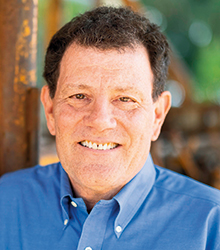
Nicholas Kristof has been a journalistic and intellectual stalwart of America’s leading newspaper, the New York Times, for nearly four decades. He is a Pulitzer Prize winner, author, commentator and humanitarian whose personal background has shaped the stories he tells. Using his skills and position to bring attention to injustice and walking alongside those who live at the margins of society, Kristof’s words and actions have influenced positive change in the world.
A native of Yamhill, Oregon, Kristof grew up on a cherry farm and raised sheep for his Future Farmers of America project. After graduating from Harvard College Phi Beta Kappa in 1981, he studied law at Oxford University on a Rhodes Scholarship. He later studied Arabic in Cairo and Chinese in Taipei and, after working in France, he caught the travel bug and began backpacking around Africa and Asia, writing articles to cover his expenses. All told, Kristof has lived on four continents, reported on six and traveled to well over 160 countries. He has encountered malaria, mobs, war and even an airplane crash while in Africa.
Originally joining the Times in 1984 to cover economics, Kristof went on to serve as a business correspondent based in Los Angeles, Hong Kong bureau chief, Beijing bureau chief and Tokyo bureau chief. Since joining the paper, Kristof has covered six American presidencies and dozens of international figures.
In 1990, Kristof and his wife, Sheryl WuDunn, then also a journalist for the Times, won a Pulitzer Prize for their coverage of China's Tiananmen Square democracy movement. They were the first married couple to win a Pulitzer for journalism. Kristof also notably covered the 2000 presidential campaign and election of eventual president George W. Bush.
Kristof won his second Pulitzer in 2006 for what the judges called “his graphic, deeply reported columns that, at personal risk, focused attention on genocide in Darfur and that gave voice to the voiceless in other parts of the world.” Together, Kristof and WuDunn have written five best-selling books with his latest solo-authored book titled Chasing Hope: A Reporter’s Life. This is a candid memoir of vulnerability and courage, humility and purpose, mistakes and learning – a singular tale of the trials, tribulations and hope to be found in a life dedicated to the pursuit of truth.
Throughout his career, Kristof has won numerous awards, including the Dayton Literary Peace Prize, the Anne Frank Award and the Fred Cuny Award for Prevention of Deadly Conflict. He has also served on the boards of Harvard University and the Association of American Rhodes Scholars. He is the father of three adult children, Gregory, Geoffrey and Caroline, with whom he has converted his family’s cherry farm into Kristof Farms, a grape and apple orchard that produces and sells wine and cider.
Mogens C. Bay
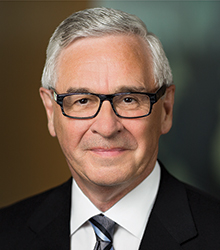
Mogens C. Bay is chairman of Valmont Industries Inc., in Omaha, Nebraska. He is a native of Vejle, Denmark, and graduated from Vejle Gymnasium in June 1968. He studied law at Aarhus University from 1968 to 1970 and graduated from the EAC College of International Business in Copenhagen in 1973. In 1984, he graduated from the Harvard Business School’s Advanced Management Program. Bay served a tour of duty with the Royal Guards of the Danish Army from July 1973 to June 1974, during which he was detailed to protect the queen and her family.
From December 1974 to December 1978, Bay served as manager of the East Asiatic Company’s office in Beijing. The East Asiatic Company was the only western company permitted to operate an office in the People’s Republic of China at that time. During his first three years in Beijing, he was the only businessman from the Western world living permanently in China.
Following his time in China, Bay joined Valmont Industries, an international agriculture and infrastructure manufacturer, in 1979 as regional vice president, Southeast Asia, and resided in Hong Kong. He moved to Madrid, Spain, in 1982 as vice president for sales and later vice president for marketing of Valmont International. In 1986, he was assigned to corporate headquarters as the president and general manager of Valmont International and, four years later, he was named president and general manager of Valmont Irrigation. He became president and chief executive officer of Valmont Industries, Inc., in 1993; chairman and chief executive officer of Valmont Industries, Inc., in January 1997; executive chairman in 2018; and chairman in 2019.
Alongside fellow honorary degree recipient Kenneth Stinson, Bay was instrumental to the design and development of the recent $400 million redevelopment of the Omaha Riverfront that includes Gene Leahy Mall, Heartland of America Park, and Lewis and Clark Landing. Additionally, Bay and Stinson’s collaborative efforts during their time as members of Creighton’s Board of Trustees and members of the board for Heritage Omaha made possible many of the iconic landmarks that border the Creighton University campus throughout Omaha’s downtown urban core.
As a community advocate, Bay is active throughout the business and civic community. He currently is chairman of The Robert B. Daugherty Foundation, The Walter Scott Family Foundation, the Omaha Zoological Society and the Omaha Zoo Foundation. He serves as vice chair of Nebraska Medicine and Heritage Omaha. He also is a trustee of the Downtown Riverfront Trust and Robert B. Daugherty Water for Food Global Institute at the University of Nebraska. He is trustee emeritus for Creighton University, having served as a trustee under three presidents from 1996 to 2015 and helping guide the University through an extraordinary period of expansion.
He and his wife, Cindy, have a daughter, Sarah, and three grandsons, Charlie, Henry and Alexander.
Kenneth E. Stinson
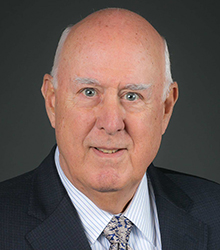
Kenneth E. Stinson is chairman emeritus of Peter Kiewit Sons’, Inc. Kiewit is one of North America’s largest and most respected construction and engineering organizations. With its roots dating back to 1884, the employee-owned organization operates through a network of subsidiaries in the United States, Canada and Mexico. Kiewit offers construction and engineering services in various markets including transportation; oil, gas and chemical; power; building; water/wastewater; industrial; and mining. Kiewit had revenues of $17.1 billion in 2023 and employs 31,100 staff and craft employees.
Stinson is a 1964 civil engineering graduate of the University of Notre Dame. He served two-and-a-half tours in Vietnam with the U.S. Navy Civil Engineer Corps, becoming company commander in a Seabee Construction Battalion. After his military service, he returned to school, earning his master’s degree in civil engineering from Stanford University in 1970.
Stinson joined Kiewit as a college intern on a Bay Area Rapid Transit project during the summer of 1969. Following graduation, he was assigned to some of Kiewit’s more notable projects; serving in various engineering and management roles on the 63rd Street Tube and Tunnel in New York City, the Pasco-Kennewick Bridge in Central Washington State, the I-205 Bridge in Portland, Oregon, and the Fort McHenry Traffic Tunnel in Baltimore, Maryland.
He moved to the Omaha headquarters in 1982 to serve as vice president. In that role, he established a new private client marketing effort to complement Kiewit’s traditional public sector contracting. In 1986, he was named division manager for contracting operations east of the Mississippi, and a few years later added executive management responsibility for Kiewit’s underground/tunneling group; its power and process group; and its mining and construction materials division.
Stinson was named president and CEO of Kiewit’s construction and mining division in 1992. When Kiewit’s noncore operations were spun off in 1998, he was named chairman, president and CEO of the parent company. When a new president was named in 2000, he continued to serve as chairman and CEO, retiring from the latter title in 2005. He was chairman of the board until January 2013 and continues to serve as a director of the company as chairman emeritus.
Alongside fellow honorary degree recipient Mogens Bay, Stinson was instrumental to the design and development of the recent $400 million redevelopment of the Omaha Riverfront that includes Gene Leahy Mall, Heartland of America Park, and Lewis and Clark Landing. Additionally, Bay and Stinson’s collaborative efforts during their time as members of Creighton’s Board of Trustees and members of the board for Heritage Omaha made possible many of the iconic landmarks that border the Creighton University campus throughout Omaha’s downtown urban core.
Stinson was first elected to the Peter Kiewit Sons’, Inc., board of directors in 1986. He also serves on the board of directors for McCarthy Group, LLC.
On the national level, he is a trustee emeritus of the University of Notre Dame and civic leader emeritus for the U.S. Air Force Civic Leaders Program. In the construction industry, he is a member of the American Society of Civil Engineers, the National Academy of Construction, the National Academy of Engineering, The Moles, The Beavers, and is former chairman of the Construction Industry Round Table.
Stinson is the recipient of numerous awards from engineering, civic and charitable organizations. He and his wife, Ann, have four sons, two daughters and seven grandchildren in the combined family.
Sr. Delores Hannon, RSM
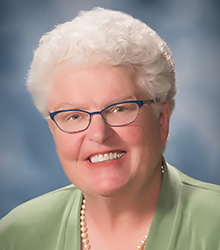
Sr. Delores Hannon, RSM, affectionately known as ‘Sister Dee,’ has given more than 50 years to the Church and more than 40 years to the education profession, most recently serving as president of Omaha’s Mercy High School from 2009 to 2023. Sr. Dee is a member of the Sisters of Mercy, a congregation originally formed in Ireland in 1831 before establishing strong presence in Omaha, Nebraska, in 1864. Sr. Dee is a significant figure in one of Creighton University’s longest-standing partnerships.
Sr. Dee is proud to have been born and raised in North English, Iowa, on a dairy farm with a loving and faith-filled family. She joined the Sisters of Mercy in 1969 while in college and soon took on educational leadership roles across Catholic schools in the Midwest. She first served as a math teacher but would go on to become a principal serving in Montana, Minnesota and Iowa before becoming president of Mercy High School in Omaha.
As a community, the Sisters of Mercy were foundational to Creighton University’s early growth. The order founded St. Joseph’s Mercy Hospital in 1870, eventually renamed Creighton Memorial St. Joseph’s Hospital in recognition of a gift from Sarah Emily Creighton. While the hospital was sold in 1880, it would be a key partner in the opening of Creighton’s School of Medicine in 1892 and is known today as CHI Health Creighton University Medical Center – Bergan Mercy. The Sisters of Mercy also have ties to Creighton’s presence in Phoenix, Arizona, opening Dignity Health St. Joseph’s Hospital and Medical Center in 1895 – where Creighton students have engaged in clinical rotations since 2005.
The legacy of the Sisters of Mercy includes opening the first Catholic school in Omaha in 1864 and teaching at 29 elementary and four high schools across Nebraska. The Sisters of Mercy also opened St. John’s Grade School in 1897, which was originally located within St. John’s Church on the Creighton campus; the school’s stand-alone facility was built in 1901 and was located on the current footprint of the Kiewit Fitness Center. The Sisters taught freshman boys in the high school department at Creighton for many of the early years and opened St. John’s High School for girls in 1911.
Sr. Dee’s contributions to education continue this same legacy. She has served as a trustee or board member at Mount Mercy University, Mercy Medical Center, St. Edmond Catholic Schools, Mercy Investment Services, Opportunity Scholarships of Nebraska and College of Saint Mary. In 2017, Sr. Dee was awarded the Creighton Prep Sword of St. Ignatius, the only woman to receive such recognition, for her outstanding service to the Catholic Church and the Greater Glory of God. She has also been involved in many fundraising efforts for scholarships, school renovations and humanitarian aid for underserved people.
However, Sr. Dee would be the first to point to her students, many of which have gone on to become Creighton students themselves, as her lasting legacy. She has said that to encourage young people to enter a future filled with faith, hope, surprises and challenges and say “you can do this,” is a role any one of us can take on for a young person.







